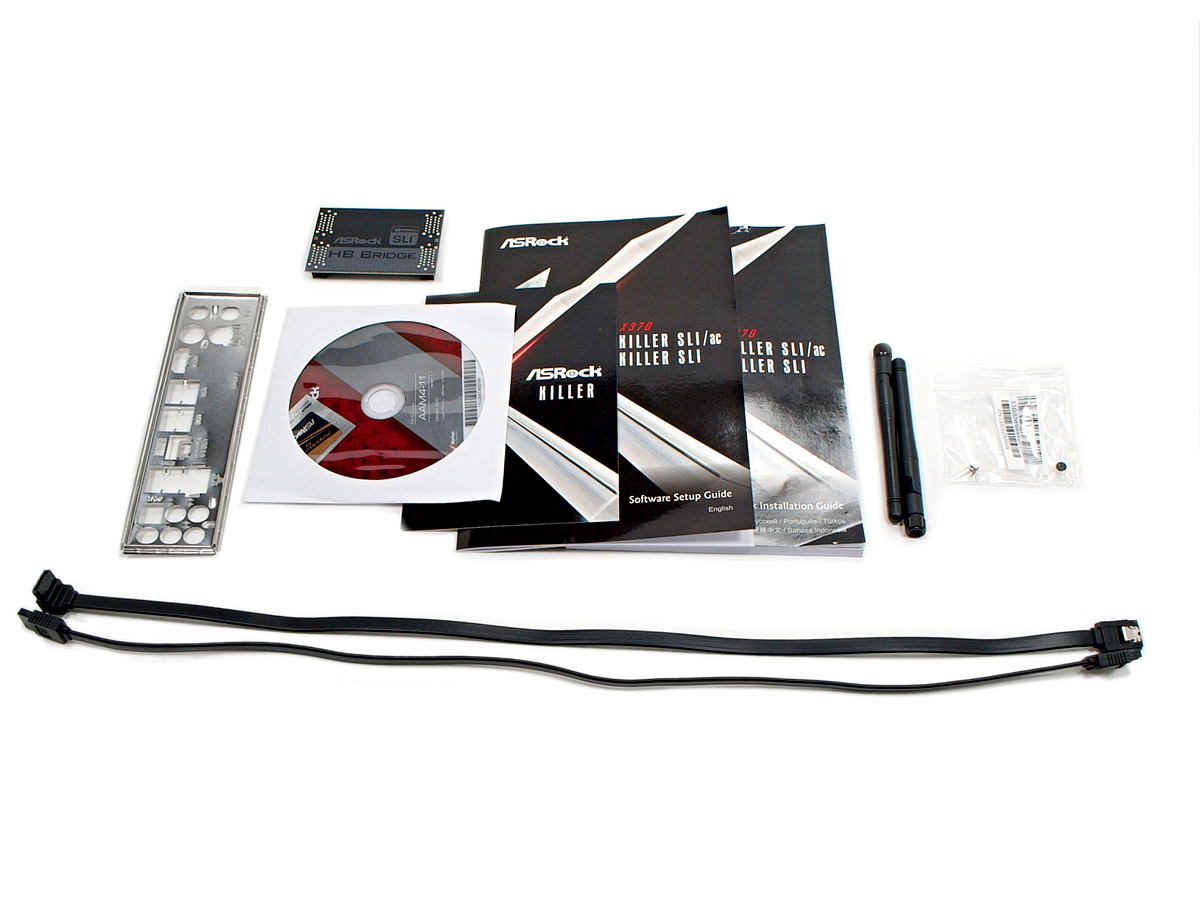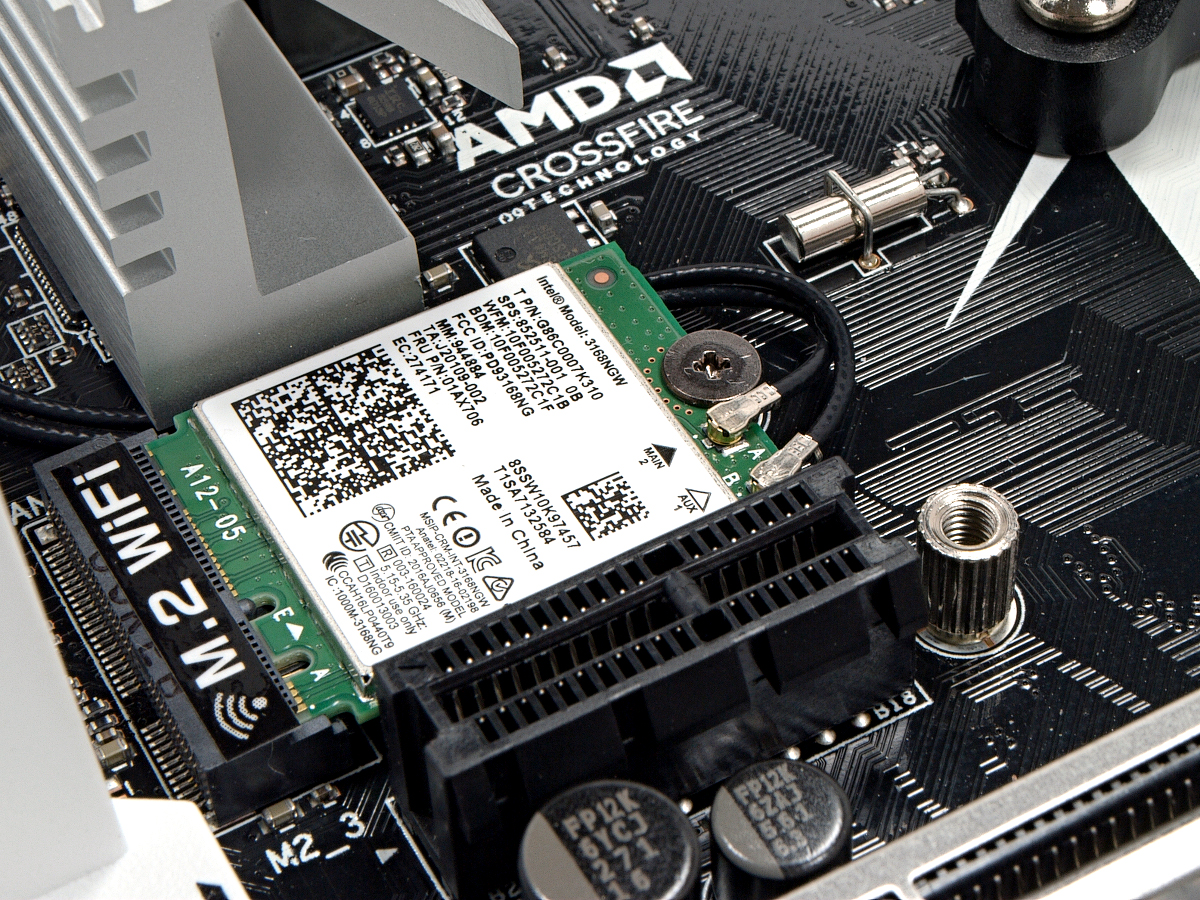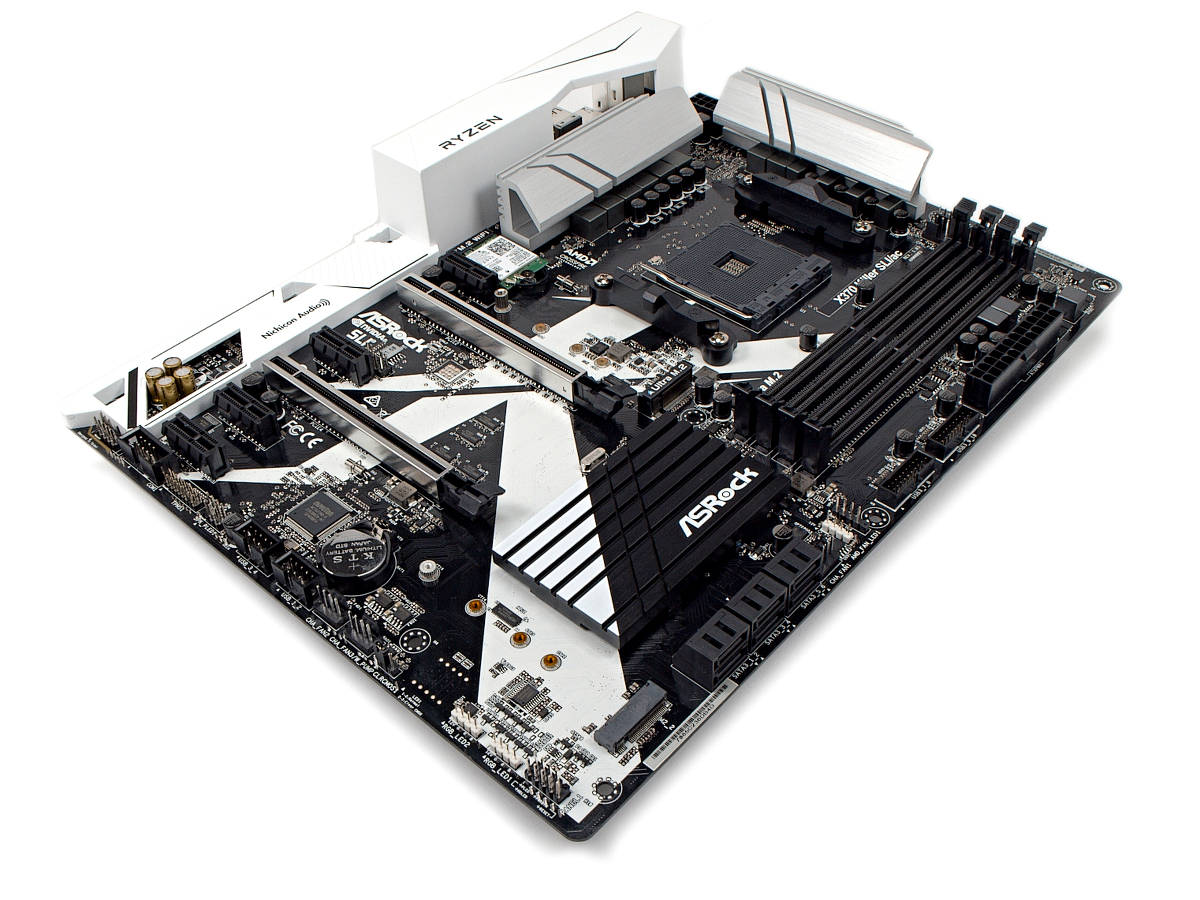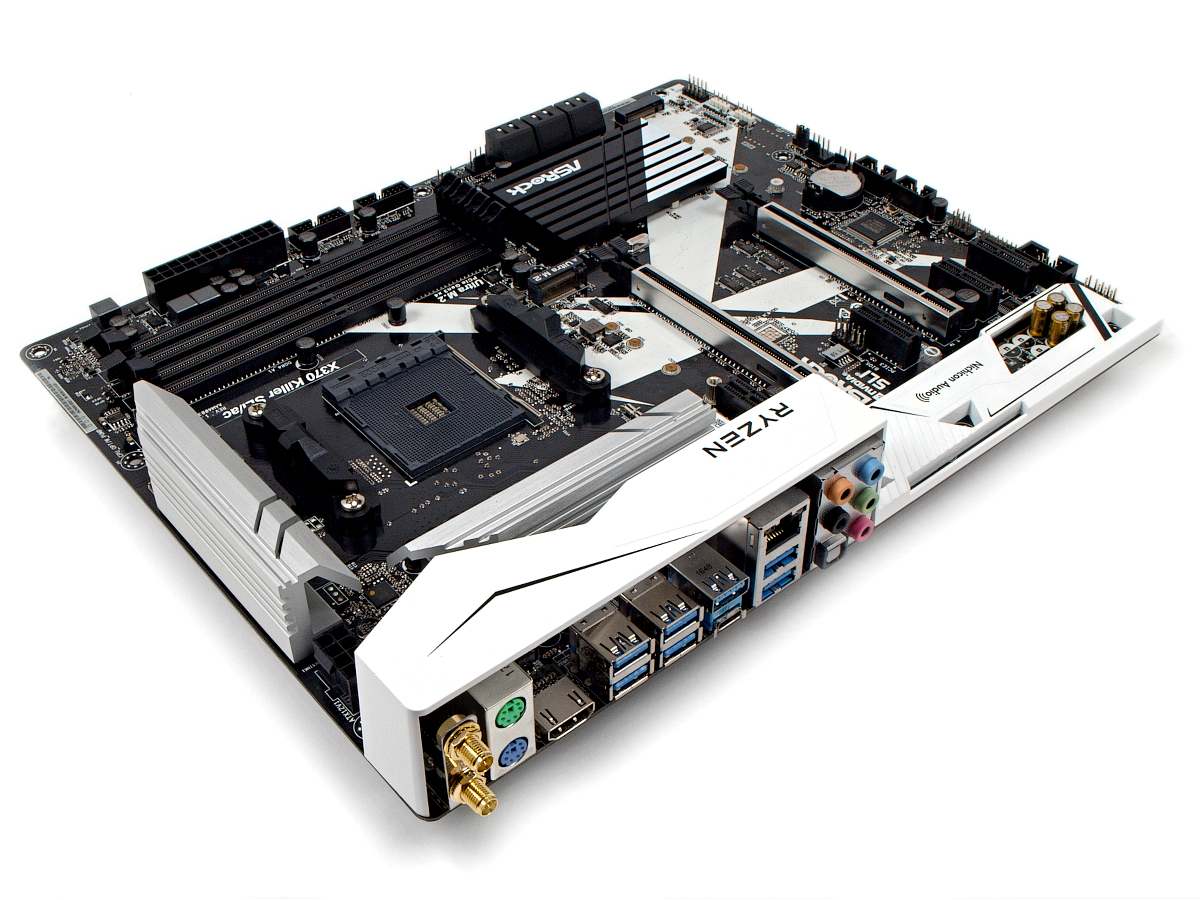Tom's Hardware Verdict
ASRock X370 Killer SLI/ac is the first AM4 motherboard we’ve tested with AMD’s AGESA 1.0.0.6 update for enhanced memory compatibility. If you must have Wi-Fi, this board trumps the Krait.
Pros
- +
Similar capabilities to more expensive products
- +
Comparable processor overclocking
- +
DDR4-2933 on all DIMMs
Cons
- -
Some performance hiccups
- -
Fashion police violation for green PCB on black planar
- -
Doesn’t fold my laundry
Why you can trust Tom's Hardware
Features & Specifications
Despite a Texas summer filled with camps, family breaks, and nonstop heat at work, my home lab follows the PC Master Race mantra of keeping framerates high and temperatures low. And it welcomes back ASRock, with its X370 Killer SLI/ac motherboard, as I finally begin working through the initial launch backlog. This one has us wondering whether the company's AM4 Killer lineup blends the style of Taichi and performance of the Fatal1ty, or if it's just white noise in this ever-growing market.
Specifications
The X370 platform shouldn't be a surprise anymore, and it's showing its growing maturity with various assortments of shapes, sizes, and bundles on the shelves. Among the boxes of red and black, RGB, and preposterous bold text, the ASRock X370 Killer SLI/ac is a nice change of pace. The “K” on the front of the packaging slices through the black void with clean lines, sharp edges, and red accents gleaming along the blade’s edges. Flipping to the back, the black and white scheme is clean, and the extra colors do not overpower the simple elegance. Contents of the package are on par with some of our other value boards, providing a backplate, two SATA cables, two antennae, some M.2 retention screws, installation media, and the obligatory SLI HB Bridge from its namesake. Below the cardboard tray rests our specimen.




At first glance, we thought this motherboard would be just a rehash of some of ASRock’s award-winning X370 Gaming K4 Gaming K4. The X370 Killer SLI/ac just reminds us of how much the red, black, and Fatal1tyness of that board warmed our circuits. Similar Vreg heatsinks, 8+4 phase design, slot placement, and even M.2 locations make maneuvering around this board a walk down memory lane.



The back panel connectors enable APU access to one HDMi v1.4 port. All Zen processors can use the two USB 3.1 Gen2 (Type A and Type C), 6 USB 3.1 Gen1, gigabit Ethernet, five analog audio, one digital audio, and two PS/2 ports. Unlike the Gaming K4, this product has the WiFi antennae and ports installed and wired to the included M.2 card.



Along the bottom edge are our usual front panel audio, USB 2.0, fans, clear CMOS, and other various headers. Water pump headers are rated for 1.5A or 18W, which should provide adequate power to modest cooling solutions. Looking at the top edge of the planar, we have two additional four-pin fan headers, single-switched DIMM connectors, and just enough space around the 8-pin 12V connector for my stubby fingers.


Though similar in layout to the Gaming K4, the Killer SLI/ac shares black and white styling with its cousin, the Taichi. RGB headers are located in the bottom right quadrant, and AMD LED fan headers reside along the right edge with the ATX connector and USB 3.0 header.



Standard promontory storage connectivity is included, with access to six SATA 6Gb/s ports. ASRock includes an Ultra M.2 connector for NVMe connectivity when using Ryzen chips, and the bottom M.2 port is wired out for two lanes of PCIe Gen2 at 10 Gb/s. Remember that extra M.2 slot on the Gaming K4? The Killer SLI populates it with an Intel Wireless-AC 3168 802.11ac WiFi variant, complete with clashing green PCB, and wires delicately routed to the back antenna ports. Comparable WiFi modules can range from $13 on eBay to $35 on Amazon, not including cables or antenna.
Get Tom's Hardware's best news and in-depth reviews, straight to your inbox.



Overall, there is not much to complain about regarding board placement and aesthetics. Sure, the WiFi module is green, and the lone aura of the chipset LEDs might not make the most vibrant off-the-shelf solution. But this white and black palette lends itself to a wide gamut of color combinations and contrast to make any windowed build light up the room.
MORE: Best Motherboards
MORE: How To Choose A Motherboard
MORE: All Motherboard Content
-
azizisalmane Nice Review, I just wanted to ask you a question, I have the same motherboard, but when i OC my RAM to 2933mhz (which is the max frenquency where windows won't crash) the boot time is like WAY LONGER, (i'm talking about the pre-splash boot, not the windows one), it usually takes like 6 seconds or 7 tops for it to show the asrock logo when on 2134mhz, but once i go up to 2933, the boot time goes up to like 17 seconds. then when it gets to windows it boots up normally within 4 seconds. Have you ever encountered this problem when testing ?! (I also updated the bios but in vain)Reply -
TheTerk Yes, this is likely due to "Advanced Training" options within the UEFI (sorry if that's not the specific name in the menus.) This feature enables the BIOS to do some stability testing on the interface to confirm that it is reliable within the training routine. Each loop of the training can take a few seconds, so your memory interface likely took a few tries to get reliable results.Reply
I'd run a memstress test on your platform to confirm 2933 is stable. -
azizisalmane Thank you So much for your fast answer, well then i guess i'll have to do the memstress test to see if it's stable !! thank you so much again you were a great helpReply -
lightofhonor 2933 is also where I have topped out on the same board. :-/ Trident-Z 3200 16GBx2.Reply -
Wingback18 i have the same board, no complaints . i believe is an awsome price to performance , the black white silver colors mix well with the case and the msi gaming x graphics card .Reply
the R5 1600X Oc well to 3.9 Ghz at 1.3975 V . the ram doesnt go pass 2933 Mhz , maybe one day Ill get those 3200Mhz , or when i get the other two modules .
the rgb is a nice , no too flashie or too much
i do have one question , why asrock put two usb headers on the board. whats the purpose of two ! can someone help me understand that desicion .
ps , two more pwm fan headers would have been perfect ! -
g-unit1111 Asrock's X370 offerings are very solid. I have the Taichi and love it. I almost went with this board, but the extra M2 port on the Taichi made it worth it.Reply -
Malik 722 it's not just the asrock who would put two usb headers on the board many motherboard manufactures put two usb headers on their boards aswell.you can use them to connect additional usb ports to the board and can also connect many other devices.Reply -
Wingback18 @MALIK 722 thanks for the answer, I been thinking . most cases only support thre usb headers , I wonder what elseReply
in the future I would like to one of them m.2 drives -
Malik 722 you see now these days all kinds of devices come equipped with usb interface or connectors and due to that increased connectivity the number of usb ports available on casings and on motherboards is not enough so that is why you see multiple usb headers on boards so that you can increase the number of ports internally and many board manufactures also give extra usb port bay with their expensive boards.Reply